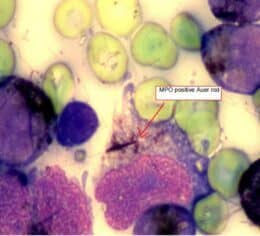AFP test -tumor marker
AFP test assay is intended for the use as: ▪ An aid in the diagnosis of hepatocellular carcinoma (HCC). ▪ An aid in the management of patients with non‑seminomatous germ cell tumors Clinical significance: AFP ( alpha-fetoprotein) is a glycoprotein that is normally produced during gestation by fetal liver yolksac, and the fetal gastrointestinal tract . … Read more

